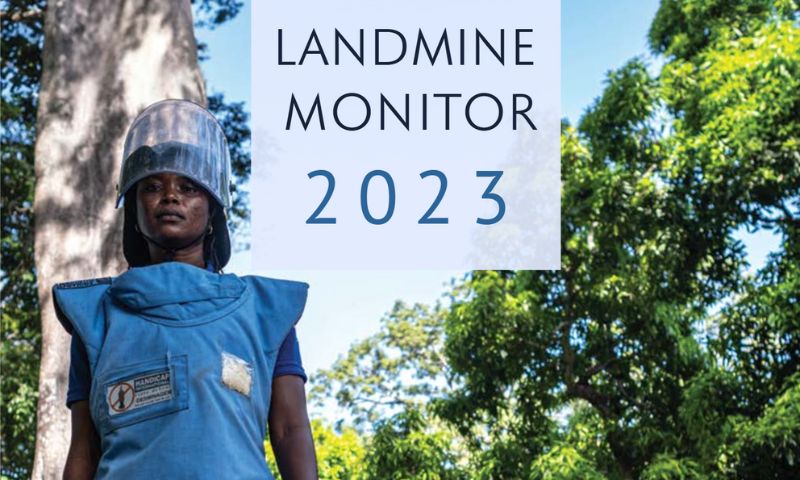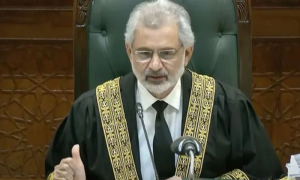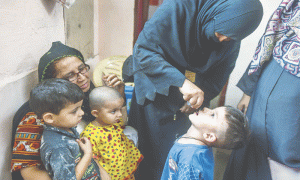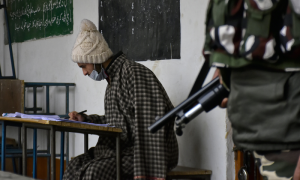ISLAMABAD: At least 4,710 people have been killed or injured by mines and explosive remnants of war (ERW) globally in 2022, said the Landmine Monitor report released by Sustainable Peace and Development Organization (SPADO) in Islamabad on Friday.
Raza Shah Khan, Chief Executive of SPADO while briefing the media on the occasion said that the figure represents a fall from 5,544 casualties recorded in 2021, and is primarily due to a significant decline in the number of reported casualties in Afghanistan, where the data collection system was under-resourced.
He said that in 2022, healthcare and rehabilitation services remained under-funded and faced increasing multiple challenges in many states, including accessibility, expertise and supply of materials.

According to the report, Syria recorded the most mine/ERW casualties of any state in 2022, followed by Ukraine. New casualties were recorded in 49 states in 2022, including 38 States Parties to the Mine Ban Treaty. States Parties accounted for almost two-thirds of all annual casualties. Most casualties in 2022 occurred in conflict-affected countries that are contaminated by improvised mines.
Positive progress was reported, as 497.34km² of land known or suspected to be contaminated by antipersonnel landmines was released by States Parties with clearance obligations in 2022 — almost double the area released in 2021, which totaled 276km2. Of the land released in 2022, 219.31km² was cleared, while 121.11km² was reduced via technical survey and 156.92km² was canceled through non-technical survey. In total, 169,276 antipersonnel mines were cleared and destroyed during clearance activities in 2022.
Landmine Monitor Report 2023 (PDF)
Despite this progress, the outlook for meeting the aspirational goal set by States Parties in 2014 “to clear all mined areas as soon as possible, to the fullest extent by 2025,” looks unlikely to be met. No State Party reported completing clearance of contaminated areas during 2022, as required by Article 5 of the Mine Ban Treaty.
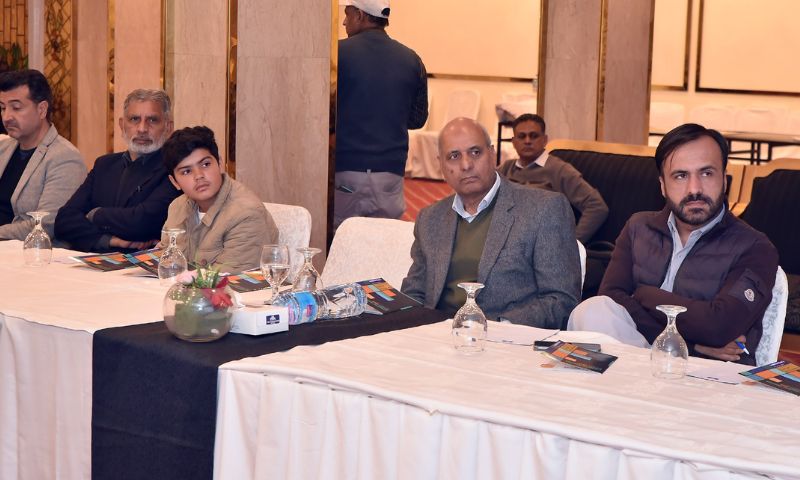
Four States Parties with clearance obligations did not undertake any clearance activities in 2022, while another six did not formally report on their Article 5 obligations. Twenty States Parties have deadlines to meet their obligations under Article 5 either before or during 2025, but very few appear on track to meet their deadline.
ALSO READ: Saudi Project Clears 730 Houthi Mines in Yemen in One Week
Ongoing armed conflict in some States Parties and the use of improvised mines is compounding the complexity of the challenge of survey and clearance. As of October 2023, at least 24 States Parties are believed or known to have improvised mine contamination.
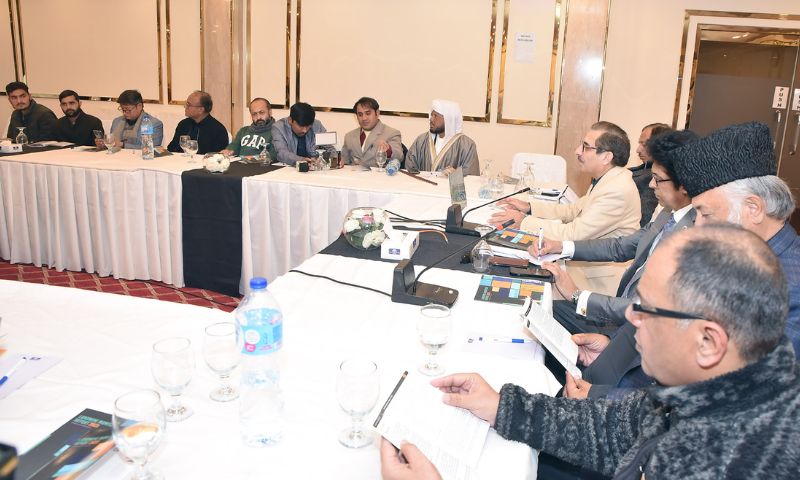
Risk education on the threat from mines and ERW is a crucial intervention, as people continue to live and work in contaminated areas. Of the 33 States Parties with clearance obligations, 28 reported or are known to have provided risk education during 2022.
These activities focused predominantly on rural communities in contaminated areas, as well as on internally displaced persons (IDPs) and returnees. Children and men remained the primary at-risk groups. National capacity-building, often via training-of-trainers programs, and the integration of risk education into other humanitarian, development, and protection initiatives, took place in the majority of States Parties that reported carrying out risk education in 2022.
According to the report, at least 37 States Parties are recognized to have responsibility for significant numbers of mine victims. Broader disability rights frameworks, and a newly-updated International Mine Action Standard (IMAS) on victim assistance, aid victim assistance efforts in these states.
Yet a lack of funding remained a major impediment to addressing victims’ needs, while health systems suffered from economic crises, armed conflict, and natural disasters in several countries. The work of States Parties, and their implementing partners, to meet the commitments made in the Oslo Action Plan to improve victim assistance—including emergency medical response, ongoing healthcare and rehabilitation, psychosocial support, and socio-economic inclusion—remains vital.
The Monitor has added Armenia to its list of countries producing antipersonnel mines, bringing this list to a total of 12 states. All listed producers are states not party to the Mine Ban Treaty: Armenia, China, Cuba, India, Iran, Myanmar, North Korea, Pakistan, Russia, Singapore, South Korea, and Vietnam.
Most of the states listed as producers are not believed to be actively producing but have yet to commit to never do so in the future. India, Iran, Myanmar, Pakistan, and Russia appear most likely to be actively producing antipersonnel mines.
Today we launched the #LandmineMonitor 2023!
A special thanks to our donors #Australia #Austria #Canada #France #Germany #Norway #Switzerland #UnitedStates #HolySee
Read the full report👇https://t.co/9E89vaOOrW pic.twitter.com/1RjivbSwTF
— The Monitor (@MineMonitor) November 14, 2023
Stockpile destruction
Of the 164 States Parties to the Mine Ban Treaty, 94 states have officially completed destruction of their stocks of antipersonnel mines, destroying a combined total of 55 million antipersonnel landmines. Sri Lanka was the last State Party to destroy its stocks, in October 2021.
Another 67 States Parties have confirmed that they have never possessed antipersonnel mines. State Party Tuvalu must provide an Article 7 transparency report to confirm its status.
States Parties Greece and Ukraine both possess stocks of antipersonnel landmines, but did not destroy any during the reporting period. They remain in violation of Article 4 of the Mine Ban Treaty, having failed to complete stockpile destruction by their respective four-year deadlines: Greece (1 March 2008), Ukraine (1 June 2010).
A total of 66 States Parties retain antipersonnel mines for training and research purposes. Two of these states—Bangladesh and Finland—each retain more than 12,000 mines, while another 23 states retain more than 1,000 mines each. Angola and Peru consumed a collective total of 1,142 retained mines in 2022, decreasing their retained mines to under 1,000 respectively, the report revealed.













